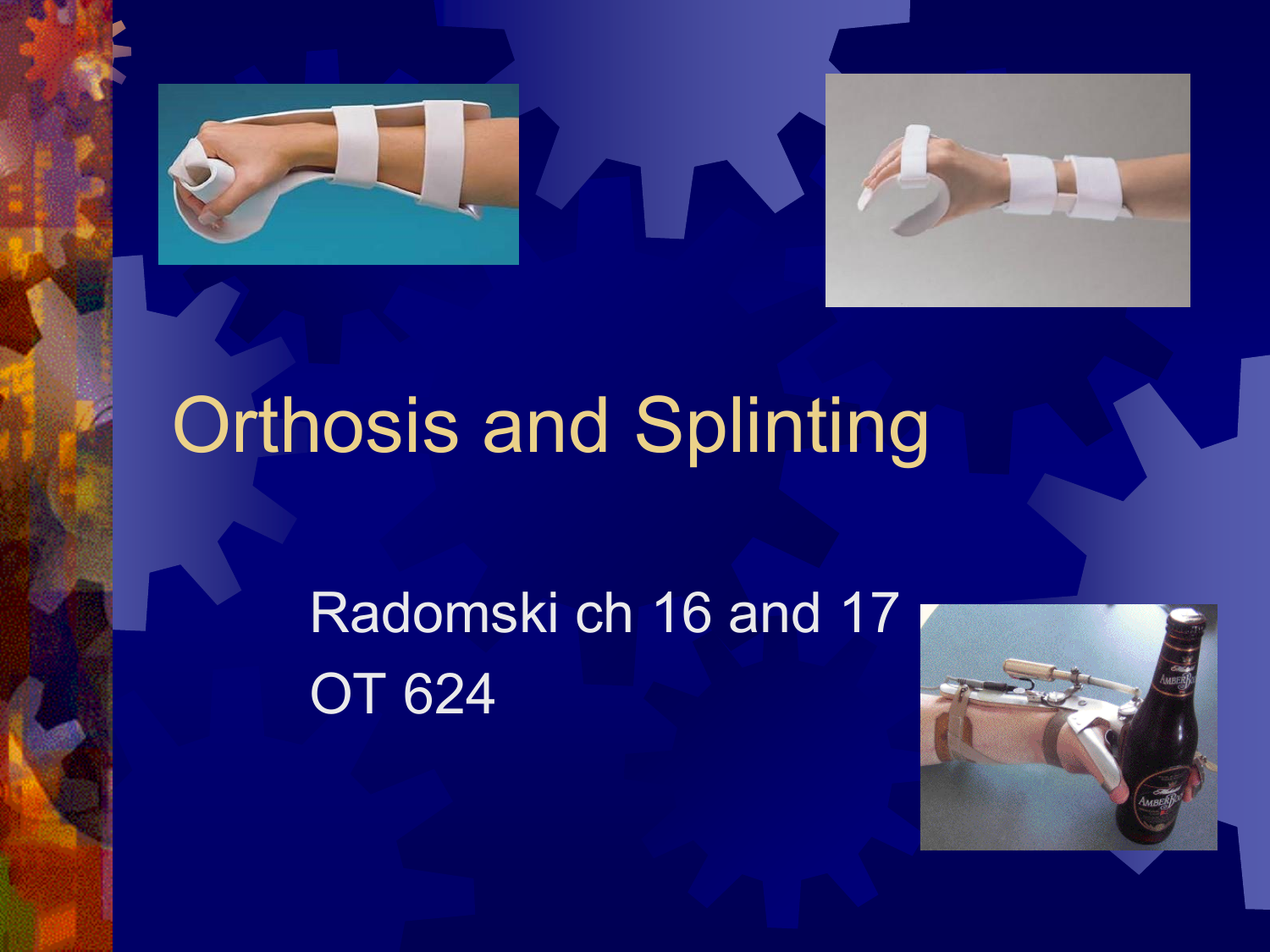
As reported previously, it is faster to achieve the elongation with the stress relaxation principle. The underlying mechanism of static progressive orthoses on contracture is based on creep and stress relaxation. Nowadays, static progressive orthoses have been used for the treatment of severe joint contracture after trauma and/or surgery. Also, the dynamic orthoses tend to cause soft-tissue injury and inflammation under a constant load to the joint, which results in low compliance. However, these interventions still have some limitations, such as time-consuming, therapist reliance, and lack of solid evidence support.
#SERIAL STATIC SPLINT SERIAL#
The nonoperative treatment mainly involves passive or assistant movement, continuous passive movement, serial bracing, and static and dynamic orthoses. Although these are efficient treatments, surgery and manipulation under anesthesia are complex and tend to cause neurovascular complications as well as recurrence. The operative treatment involves open or arthroscopic release, arthroplasty, and manipulation under anesthesia. Currently, there are two types of interventions for elbow contracture: operative and nonoperative treatment. Normally, the range of elbow flexion 100° (30°~100°) and forearm rotation between 50° of pronation and 50° of supination is required for most daily activities, with a loss 50° flexion leading to an 80% loss of functionality. The most direct consequence of contracture is the decreased range of motion (ROM). More importantly, pain and swelling after trauma or surgery play an essential role in promoting the formation of contracture. Recent reviews, however, suggested that most of elbow contractures are caused by a combination of both intrinsic and extrinsic factors. Among those factors, capsular and soft-tissue contractures are considered the main causes of elbow contracture. The intrinsic causes include intra-articular adhesions, articular malalignment, loss of articular cartilage, and a combination of the above, while the extrinsic causes contain capsular and ligamentous contracture, heterotopic ossification, extra-articular malunions, and soft-tissue contractures following burns. Posttraumatic elbow contracture may result from both intrinsic and extrinsic factors. Due to the multitude of etiologies, the incidence of elbow contracture after trauma and surgery which requires surgical treatment is up to 12%.

IntroductionĪs one of the most common musculoskeletal complications following trauma, elbow contracture is a frequent source of disabled daily activities. Further research is recommended using high-quality randomized controlled trials. Current low-quality evidence suggested that static progressive orthoses provided assistance for elbow contracture through improving range of motion. No significant difference was shown between static progressive and dynamic orthoses for elbow contracture in one randomized control trial. Significant immediate improvement in the range of motion was reported by all studies, and those effects were still significant at follow-up. The study design and outcome measures used varied.

Articles are quality-assessed by two assessors, each article was summarized in evidence tables, and a narrative synthesis was also performed. Literatures when written in English published during 1 January 1997 and 31 January 2017 were searched in the following databases: Web of Science, Cochrane Library, PubMed, and EBSCOhost. The purpose of this review was to assess the effectiveness of static progressive orthoses for elbow contracture.

The static progressive orthoses are getting popular in the treatment of this problem. Conventional interventions are inadequate to provide favorable outcome. As one of the most common musculoskeletal complications following trauma, elbow contracture is a frequent source of disabled daily activities.


 0 kommentar(er)
0 kommentar(er)
